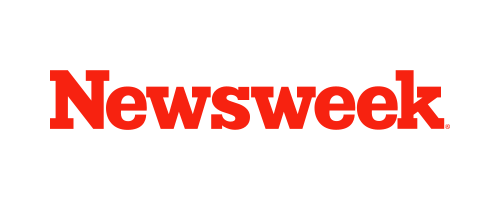Skip to the good bit
ToggleThe landscape of talent acquisition has undergone a seismic shift. As remote work becomes the new normal, organizations face exceptional opportunities and unique challenges in attracting top talent. A recent McKinsey study reveals that 58% of Americans now have the option to work remotely at least part-time. At the same time, Upwork projects that 36.2 million U.S. workers will be fully remote by 2025—an 87% increase from pre-pandemic levels.
This digital transformation has expanded the talent pool globally and eliminated geographical limitations by opening access to diverse, skilled professionals. However, it has also heightened competition for exceptional candidates. Organizations must now master the art of remote recruitment to stand out in a crowded digital marketplace.
In this guide, we have mentioned some proven strategies and best practices for identifying, attracting, and securing exceptional remote talent in today’s digital landscape.
Crafting an Effective Remote Job Description
Remote job postings require unique elements beyond traditional listings. They should include specific details about time zones, required collaboration hours, and tech stack requirements. DigiWork’s successful remote hiring practices demonstrate the importance of transparency—their job descriptions explicitly outline asynchronous communication expectations and remote work tools.
Leveraging Digital Platforms Strategically
While LinkedIn remains crucial, remote talent often congregates on specialized platforms. Stack Overflow reports that 75% of developers are actively looking for remote opportunities through their platform.
DigiWork’s AI platform revolutionizes remote recruitment by removing geographical barriers and unconscious bias from hiring decisions. Our platform combines skills-based assessments with advanced AI matching to evaluate thousands of global candidates objectively.
Through automated screening, real-time skill verification, and bias-free candidate matching, DigiWork streamlines the entire remote hiring process. Employers can efficiently review pre-qualified candidates, conduct virtual interviews, and make data-driven hiring decisions based purely on merit.
The platform’s integrated tools manage everything from initial sourcing to final team integration, ensuring you build high-performing remote teams efficiently and equitably. With DigiWork, find the right talent for your needs, validated by skills, not location.
Assessing Remote Work Capabilities
Remote work demands a unique set of skills, and research from Microsoft highlights key traits of successful remote employees—strong written communication, self-motivation, and digital collaboration proficiency. Finding candidates who excel in these areas is essential for businesses looking to build a high-performing remote workforce.
At DigiWork, we help organizations empower their remote teams with training, employee engagement, performance tracking, and development tools, ensuring a thriving work culture on a global scale. In this blog, we’ll explore effective strategies to identify, recruit, and retain exceptional remote talent, leveraging technology to streamline the hiring process and foster long-term success.
Creating an Engaging Virtual Interview Process
A well-structured virtual interview process is essential for assessing both technical expertise and remote work compatibility. DigiWork helps businesses streamline remote hiring by incorporating best practices from industry leaders like Shopify, which uses a multi-stage approach:
- Initial asynchronous video interview to evaluate communication skills.
- Live technical assessment via collaborative platforms.
- Virtual culture fits discussion to gauge alignment with company values.
- Remote work scenario simulations to assess adaptability.
By integrating these steps, organizations can effectively identify top remote talent and ensure long-term success in a digital-first work environment.
Onboarding for Remote Success
A well-structured remote onboarding process is crucial for employee retention and long-term success. According to Glassdoor, companies with strong onboarding programs experience an 82% improvement in employee retention, highlighting the importance of a seamless and engaging introduction to the organization.
To ensure new hires integrate smoothly into a remote work environment, businesses should implement structured 30-60-90-day plans that outline key milestones and expectations. This phased approach helps employees gradually adapt to their roles while setting clear performance goals.
Providing access to a digital documentation library is equally important, as it allows employees to reference company policies, training materials, and best practices at their convenience. Regular check-ins and feedback sessions further enhance the onboarding experience by ensuring open communication and addressing any challenges early on.
Sort Payments, Compliance, Laws
DigiWork’s AI-powered platform transforms how organizations source and
Hire the best remote talent, combining advanced technology with skills-based assessment to eliminate geographical constraints and unconscious bias.
Our platform streamlines the entire remote hiring journey through automated screening and AI-driven matching. By evaluating thousands of candidates worldwide using objective skills assessments, we ensure that every potential hire meets your specific requirements. The platform’s sophisticated matching algorithm considers multiple factors beyond traditional metrics, creating unbiased, skill-based connections between employers and candidates.
DigiWork’s integrated suite of tools manages the complete recruitment process – from initial candidate sourcing to final team integration. Employers can efficiently review pre-qualified candidates, conduct virtual interviews, and make data-driven hiring decisions through our user-friendly interface. The platform’s built-in collaboration features facilitate seamless communication and assessment during the hiring process.
Measuring Remote Hiring Success
DigiWork’s analytics dashboard provides comprehensive metrics to track and optimize your remote hiring process. Our platform measures key performance indicators, including time-to-hire, cost-per-hire, and quality of hire, through automated data collection and analysis.
The platform’s AI-driven insights identify bottlenecks, predict hiring outcomes, and suggest process improvements based on historical data. Custom reporting tools allow teams to track diversity metrics, source effectiveness, and ROI on hiring investments. This data-driven approach ensures continuous optimization of your remote recruitment strategy.
Conclusion
The remote talent landscape continues evolving. Organizations that master remote recruitment gain access to a global talent pool and competitive advantage.
Success in remote recruitment requires adapting traditional practices to digital environments while maintaining a focus on candidate experience and company culture. Remote hiring isn’t just about finding talented individuals – it’s about identifying those who thrive in autonomous, digital-first environments. By implementing these strategies and continuously refining your approach based on data and feedback, you can build a strong remote workforce positioned for long-term success.







